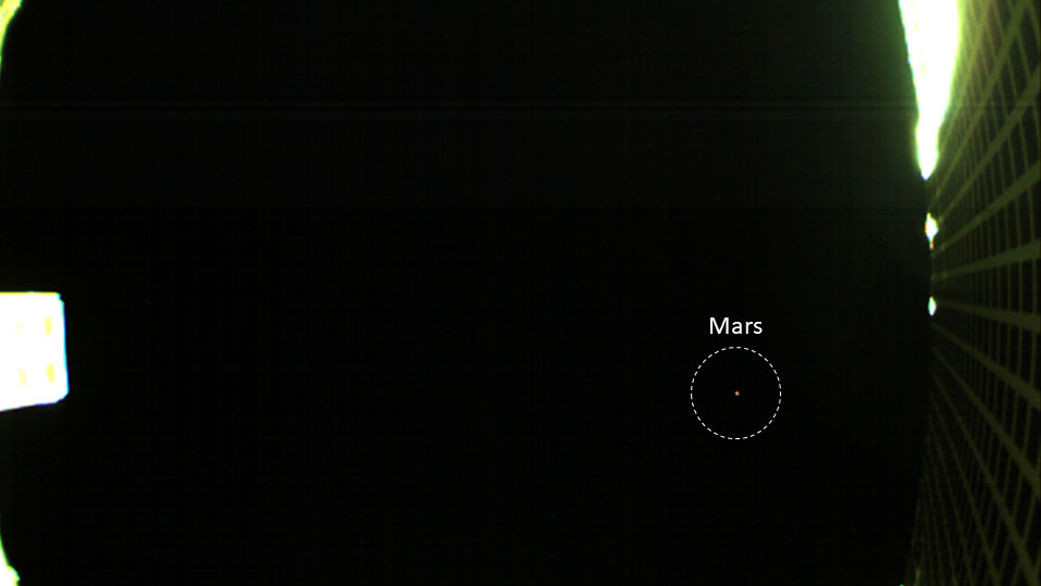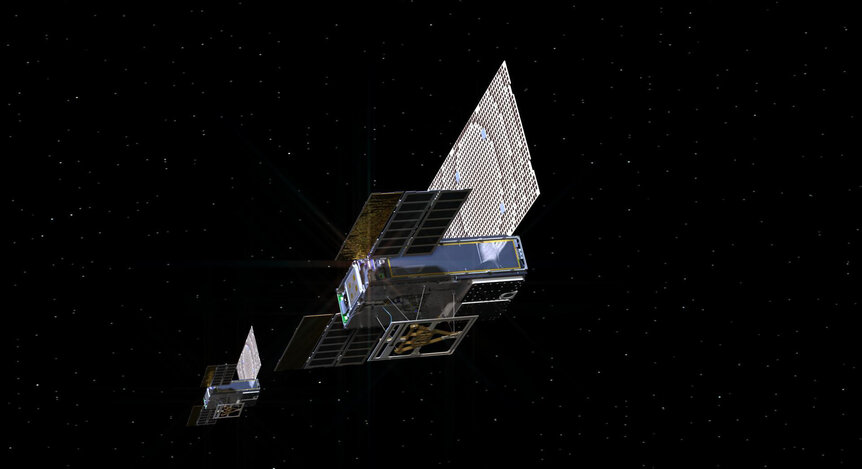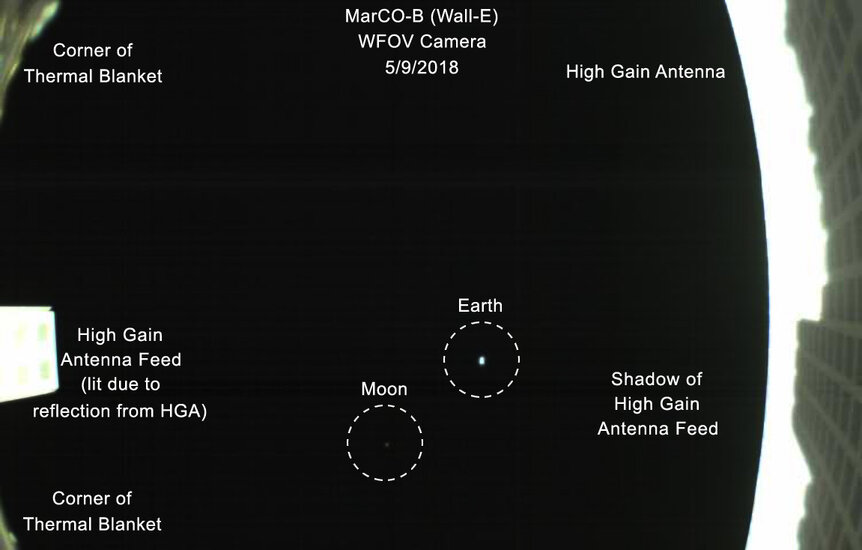Create a free profile to get unlimited access to exclusive videos, sweepstakes, and more!
Pale Red Dot… for now

I do so love high-resolution full-color enormous images of galaxies, nebulae, and star clusters.
But there are times when a low-res, mostly black, and maybe-kinda-medium-sized snapshot fills my heart with wonder.
Such is the case now. Witness this unassuming photo, and let your imagination soar.
That is an image taken by MarCO-B, aka “Wall-E,” and it shows Mars. You can see the planet as a simple red dot, unresolved, an entire world literally too far away and too small to appear as anything but a point of light.
But that will change, and very soon.
MarCO-B is one of two spacecraft (along with its redundant twin, MarCO-A, nicknamed EVE, naturally) that comprise Mars Cube One, a mission to Mars. Launched along with NASA’s InSight lander on May 5, 2018, they have been cruising for all these months toward the Red Planet, and after traveling for 400 million km are now nearing their target.
This image — the first one of Mars by the spacecraft — was taken from a distance of about 8 million kilometers, a fair distance, about 20 times the distance of the Moon from the Earth. It was taken using the MarCO-B’s wide-field camera, which is why Mars is just a dot. At that distance, Mars’s 6,800 km diameter appears to be just 0.03° across (roughly 2 arcminutes, where the Moon is 30 arcminutes wide as seen from Earth). If you were sitting on MarCO-B (which would be uncomfortable, as you’ll see in a moment), Mars would just barely be discernible as a disk, maybe if you squinted.
The wide-field camera has a 752 x 480 pixel detector on it, and sees 138° across the diagonal; that means Mars is far smaller than a pixel wide. For the moment. The spacecraft are still on their way, headed for a rendezvous on Nov. 26. Given that timing, Mars will stay a dot in this camera until just a day or two before MarCO-B passes the planet.
But there’s also a narrow-field camera, which has a 6.8° diagonal view; to it, Mars is already a couple of pixels wide. However, the cameras are mounted on opposite sides of the spacecraft, and since this was a test pointing engineers used the wide camera to maximize their chance of success. We’ll get better views of Mars soon enough.
All this aside, there are a couple of reasons this image struck me so. For one thing, MarsCO-B and its twin are small. They’re CubeSats, a bit like LEGO spacecraft, assembled from smaller, versatile cube-shaped units — in this case, six of them. Each MarCO is a rectangular parallelepiped just 10 x 20 x 30 centimeters on a side. I’ve had plates of nachos bigger than that. To be able to fling one, let alone two, of these minisats into space all the way to Mars is a feat unto itself.
But the bigger reason is what they mean. They’ll be used as backup communication relays for InSight, the spacecraft that will land on Mars and which comprises the main goal of the mission. A previous spacecraft, Mars Reconnaissance Orbiter, will be used as the primary communication relay, but the MarCO twins will also be used to see if they can be used to perform such a task. They have a flat rectangular antenna on one face that will be used to send telemetry and images back to Earth during the rendezvous.
If this works, it will prove that such small (and inexpensive — that’s how two redundant versions could be flown!) spacecraft can do far more than you’d expect at first glance, and could be key players for interplanetary missions.
CubeSats have been around for a while, and I remember wondering what the heck they could be used for back when I first read about them. And now, here we are… or more accurately, there they are, flying to Mars. I have since learned that my own initial lack of imagination should not be used as a limiter on that of others.
That’s a pretty good lesson.
I’ll note that while InSight will touch down on the dusty surface of Mars, the two CubeSats will fly past the planet, heading into space. But they’ll still be orbiting the Sun forever, pioneers of a new type of spacecraft and a new way of thinking about exploring the planets.





























